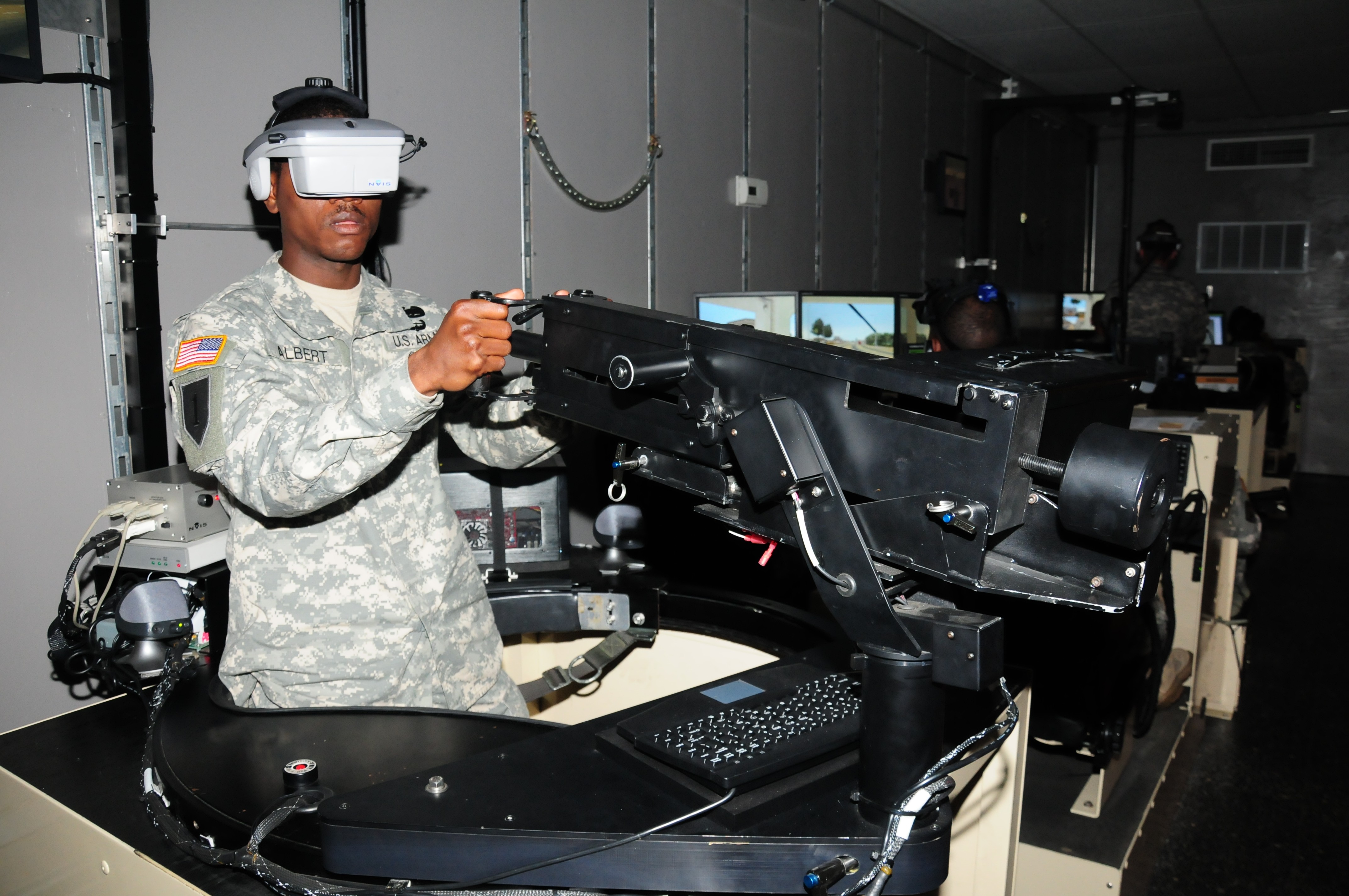MANNHEIM, Germany- If you've paid a visit to Coleman Barracks in Mannheim lately, you may have driven or walked past two large trailers set up side by side near the base chapel. Both are similar in appearance to what you would find attached to a big rig, but that's where any similarities end.
Inside the trailers, Soldiers from the 51st Transportation Company, are finalizing the details for their latest mission - conducting a presence patrol in Iraq's Green Zone.
In the background, listening and observing is Bob Evans, a senior training specialist from Raydon. His company is the creator of the Virtual Combat Convoy Trainer, a multi-million dollar training system.
The system is designed to teach Soldiers how to plan and execute convoy operations in enemy territory.
A highly sophisticated system of computers works flawlessly to simulate virtual scenarios. Soldiers can encounter everything from snipers and improvised explosive devices to suicide bombers and civilian activity during their computerized convoy missions.
"This is important because it will save people's lives," Evans said. "It teaches them what to look for and what to be aware of. It's just really good training, and the feedback is phenomenal."
Evans spent 26 years in the Air Force as a forward air controller before retiring in 2005. He also has three combat tours in Iraq and one in Afghanistan under his belt and says training capabilities have definitely advanced since his days in uniform.
"When I was in the military, we were basically out in the field throwing rocks at each other and practicing our techniques that way, but now this offers troops a real insight into what really is happening downrange," Evans said.
He estimates about 150 to 200 Soldiers per week have used the VCCT since it's been on Coleman.
The VCCT features a 360-degree spherical field of vision, multiple weapons' systems and geospecific imagery. The digital satellite imagery is based on data from actual buildings, terrain and streetscapes found in Iraq.
Evans says the images are almost identical to what Soldiers would see if they were really deployed there, right down to the traffic patterns and pedestrians.
Once the briefing is over, the platoon separates in teams and the Soldiers mount up for their virtual convoy. After receiving the thumbs up from the convoy commander, the lights go out and the fun begins.
From start to finish, a virtual mission can take anywhere from 30 minutes to an hour or more. Evans can adjust the degree of difficulty and customize each mission according to the needs of the unit. The possible mission scenarios are limitless.
Participants are positioned in a virtual Humvee, complete with a headpiece and mock weapon. A large projection screen displays the platoon's route. Soon, it will be lit up with activity from insurgent forces.
"I think this training is important because you train how you fight," said Spc. Sherita Landers. The Tennessee native says this was her first time doing this type of training with gun trucks. "If you practice this training repetitively, when something does happen, it'll just be natural instincts. You'll know what to do," she said.
That's exactly what her platoon sergeant, Staff Sgt. Johnny Miller, wants to hear. "I want them to have that muscle memory, without having to think 'what should I do,'" Miller said. "They should automatically know how to react."
Miller took over the platoon in December, not long after returning from a combat deployment to Iraq. He says the VCCT training has also helped him to assess where his platoon is and what it needs to focus on for the fight.
After the lights come on, the platoon reassembles to conduct an after action review, detailing what went right and what went wrong during the mission.
"We did pretty good," Miller said. "Especially with this being the first week of training, the Soldiers caught on fast and provided lots of input ... it gives them more confidence. So when we do get those orders to go downrange, these guys are ready to serve their nation."
For more information on the VCCT or any of the other Raydon training systems visit www.raydon.com.


Social Sharing